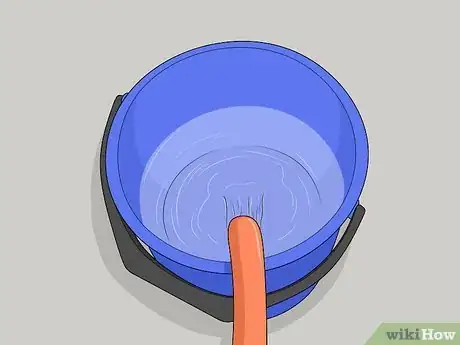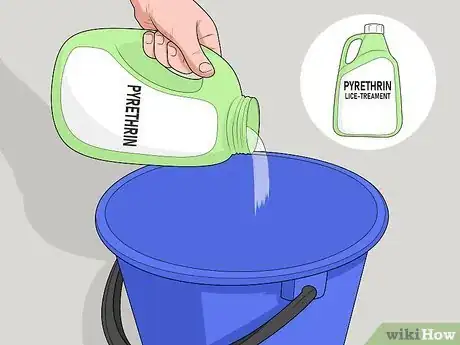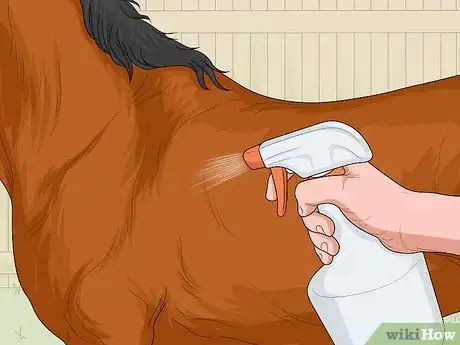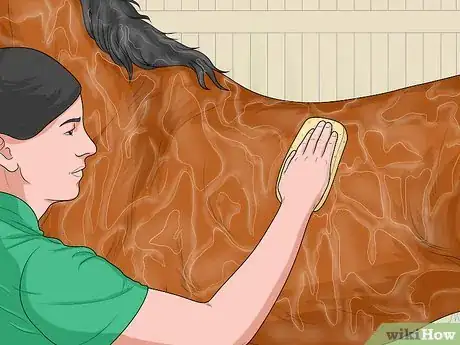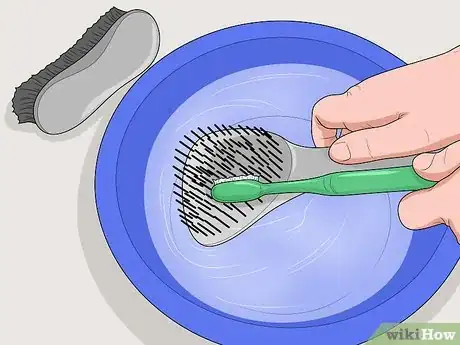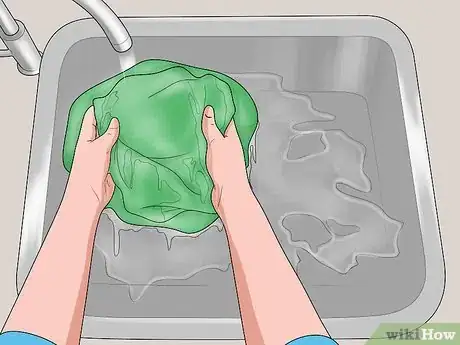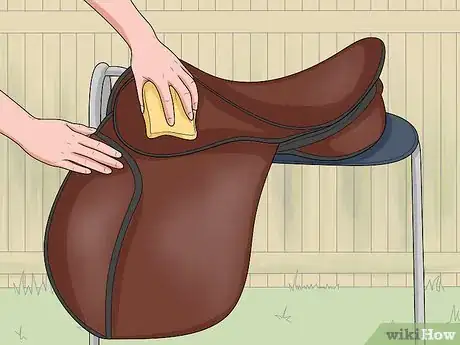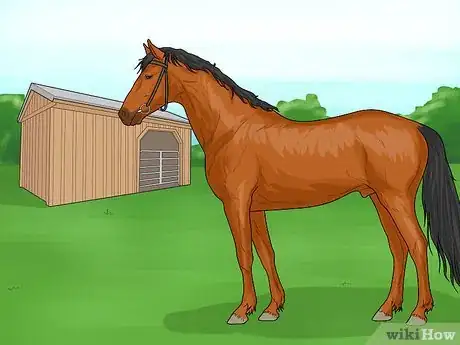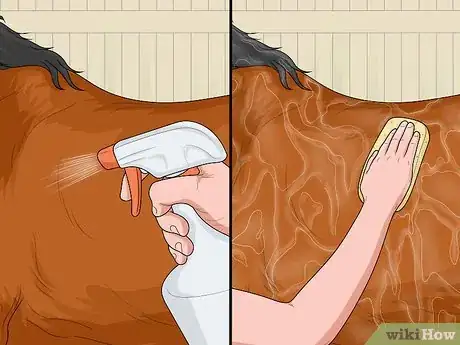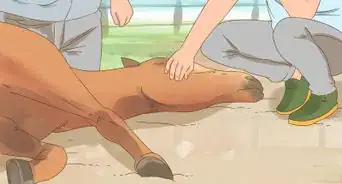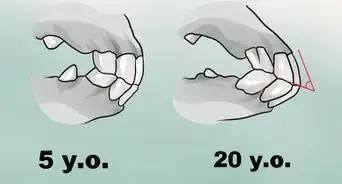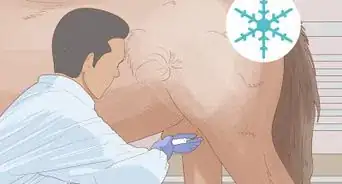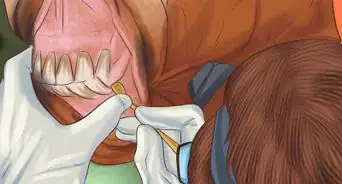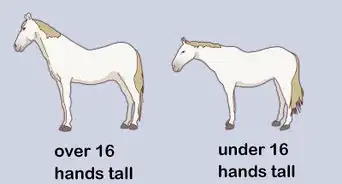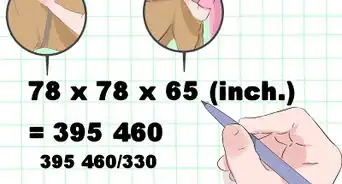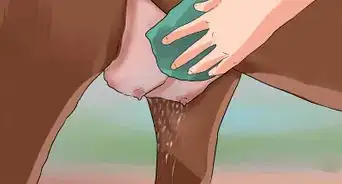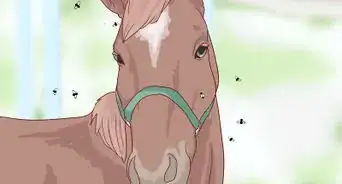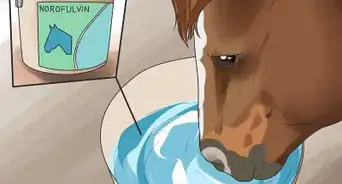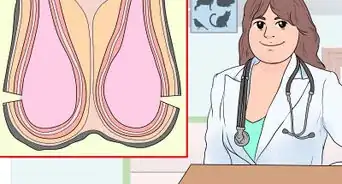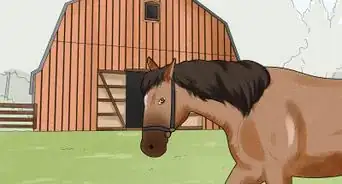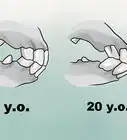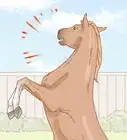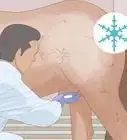wikiHow is a “wiki,” similar to Wikipedia, which means that many of our articles are co-written by multiple authors. To create this article, 10 people, some anonymous, worked to edit and improve it over time.
wikiHow marks an article as reader-approved once it receives enough positive feedback. In this case, 97% of readers who voted found the article helpful, earning it our reader-approved status.
This article has been viewed 124,343 times.
Learn more...
Like dogs, horses can become infected with lice. Equine lice infestations can cause irritation, hair loss, anemia, scarring and inflammation of the skin, and self-mutilation. Once a veterinarian has confirmed that your horse does have equine lice, the steps for treating the condition and easing your horse's discomfort are simple. This article explains how to treat horse lice.
Steps
Treating the Infestation
-
1Fill a bucket with water. Place the bucket near the horse, but avoid putting it near the hind legs, where the horse is likely to kick it over.
-
2Mix lice shampoo with the water. Mix a veterinarian-recommended lice-treatment shampoo, such as pyrethrin, with the water in the bucket. Pour the water and shampoo into a large spray bottle.[1]
- Make sure the lice shampoo is formulated specifically for horses. Lice treatments for cattle or sheep may cause skin irritation and hair loss.
Advertisement -
3Spray the horse. Spray the pyrethrin mixture all over the horse's body, being careful to avoid the eyes, ears, and nose.
- Although lice are found primarily in horses' manes, tails, fetlocks and along their backs, the lice may also be hiding anywhere within the coat.[2]
- Therefore, it is important to treat the horse's entire body, even if it's just a light infestation.
-
4Rinse the horse. Thoroughly wash off the horse to remove the pyrethrin mixture, using a sponge or rags soaked in clean water. If the weather is cool, use warm water. If the weather is warm, the horse can be washed off with a garden hose.
-
5Dry the horse well with clean towels. Also be sure to use a brush or comb to untangle the hair on the horse's mane, tail, forelocks and fetlocks to remove any lice or nits (lice eggs) that may be caught in them.
-
6Sprinkle insecticide on the floor. Sprinkle a light coating of non-toxic Sevin dust on the floor of the horse's stable. This will kill off any remaining lice, thus preventing them from finding a new host.[3]
Preventing Reinfestation
-
1Clean all of the horse's grooming tools. Use the pyrethrin mixture to thoroughly wash all of the horse's grooming tools, making sure to rinse them well afterwards. This will prevent the horse from being re-infested during grooming.[4]
-
2Wash all blankets. Wash any blankets or rugs that have been used by the horse or that are located in any areas the horse has come in contact with.
-
3Clean the horse's saddle. Rub down the infested horse's saddle and harness using a leather cleaner or other appropriate cleaning product.
-
4Keep horses out of arenas or paddocks where the infested horse has been. Lice may still be present on trees or rails that the infested horse rubbed up against while scratching.[5]
- Luckily, equine lice can only survive without a host for several days at most, so the paddock can be used again within about 10 days.
-
5Do a second lice treatment. Since lice treatments do not destroy the eggs, a follow-up treatment is usually recommended about two weeks after the initial treatment, in order to kill any lice that may have hatched in the interim.[6]
Community Q&A
-
QuestionI was told to use lice powder, but that burned my horse's hair along his mane and back. What should I do now?
 Community AnswerApply a burn cream to the area, along with sunblock. Avoid rubbing the area, and contact a vet for more long-term care advice.
Community AnswerApply a burn cream to the area, along with sunblock. Avoid rubbing the area, and contact a vet for more long-term care advice. -
QuestionI have used Pestine powder on my miniature pony, whose been rubbing the top of his tail. Badly. I have rewormed him twice, and saw him rubbing madly again last night. Should I use 'Lice n Easy' now?
 Community AnswerComb him. Combs can catch lice and remove them. You may also want to talk to your vet about it; he may be suffering from something besides lice.
Community AnswerComb him. Combs can catch lice and remove them. You may also want to talk to your vet about it; he may be suffering from something besides lice. -
QuestionDo you have to put your horse on new shavings or can you just spray with solution?
 Community AnswerYou should put new shavings in because if there is lice further down then eventually it will come out and be on your horse again.
Community AnswerYou should put new shavings in because if there is lice further down then eventually it will come out and be on your horse again.
Warnings
- In severe lice infestations, a horse can rub itself raw trying to ease the discomfort caused by the lice. Open wounds can attract all sorts of infections and make the situation much worse. Lice should be treated as quickly and thoroughly as possible to avoid compounded the problem.⧼thumbs_response⧽
- Be sure to use a lice shampoo made specifically for horses. Using lice shampoos made for cattle or sheep can cause severe skin reactions and/or hair loss in horses.⧼thumbs_response⧽
Things You'll Need
- Bucket and soft sponge or rags, or a garden hose
- Large spray bottle
- Pyrethrin shampoo (check to be sure it is appropriate for use on horses)
- Non-toxic Sevin dust
- Towels
References
- ↑ https://equusmagazine.com/management/lice-alert-25185
- ↑ https://ker.com/equinews/controlling-lice-horses/
- ↑ https://aaep.org/sites/default/files/Guidelines/Lice.pdf
- ↑ https://www.equisearch.com/discoverhorses/disinfect_051905
- ↑ https://www.equisearch.com/discoverhorses/disinfect_051905
- ↑ https://www.petmd.com/horse/conditions/skin/c_hr_lice?page=2
About This Article
If you need to treat horse lice, mix a lice shampoo designed for horses, like pyrethrin, with water in a spray bottle. Then, spray the pyrethrin over the horse's body, but be careful to avoid the eyes, ears, and nose. To finish treating the horse, rinse it off with a wet sponge and dry it with a towel. You'll also need to wash the horses grooming tools, saddle, and blanket with the same mixture. Finally, spread an insecticide powder over the stable floor to kill any remaining lice. For tips on how to prevent another infestation of lice, read on!
